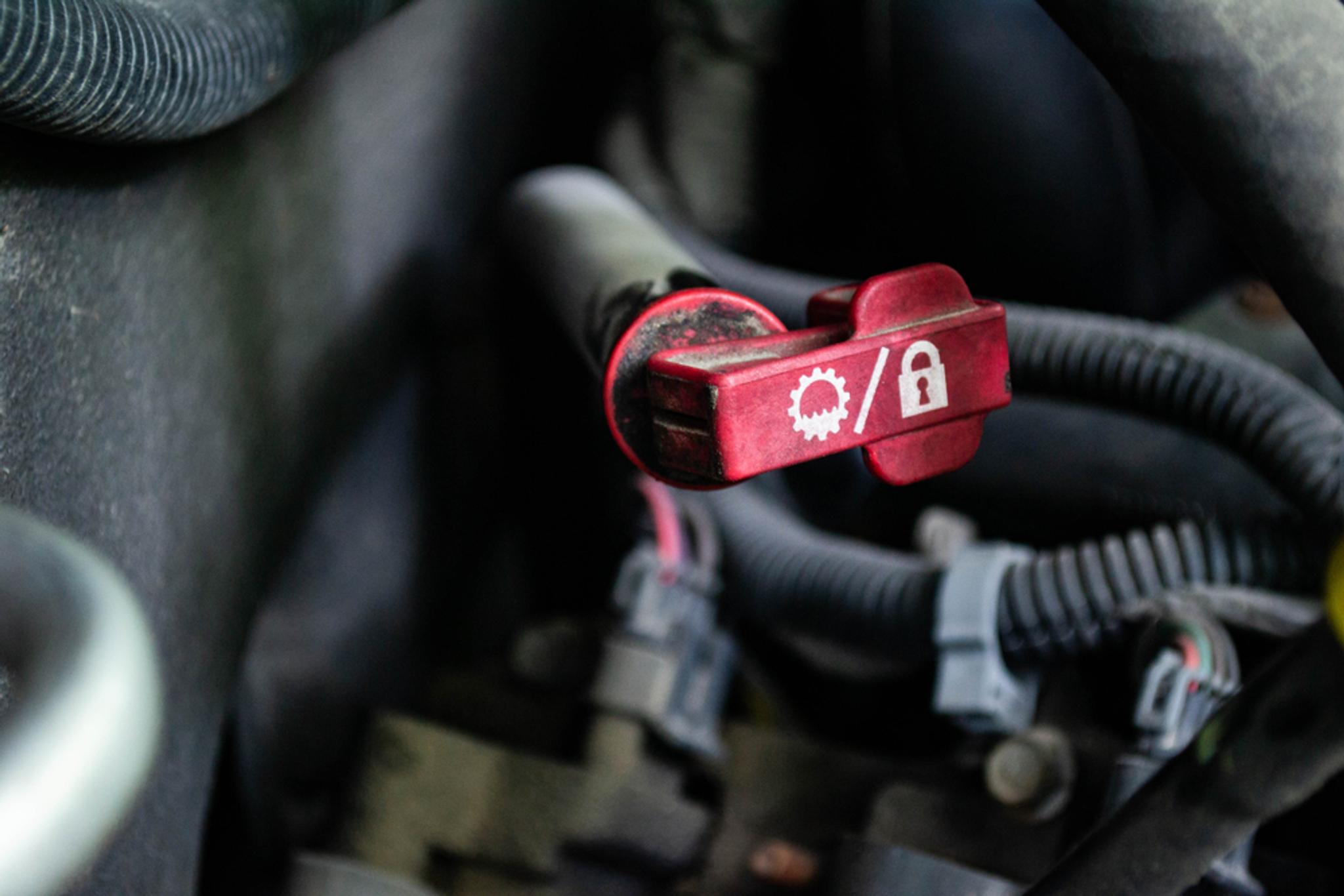
Your vehicle’s transmission plays a fundamental role in keeping your daily commute smooth. Yet, it’s easy to overlook this vital component until the problem arises.
Checking the transmission fluid level and condition is one of the simplest maintenance tasks you can do to ensure your car’s performance. While many car owners understand the importance of checking the engine oil, transmission fluid is often left unattended, which can lead to some costly repairs down the line.
Whether you're a new driver or a car enthusiast, knowing how to check the transmission fluid is a helpful skill that can save you time, money, and the hassle of unexpected breakdowns. So, let's go through the essential steps and tips on how to do it.

Afraid of buying a wreck?
Check any VIN to learn a vehicle's history!
Checking transmission fluid level and condition
Before checking the transmission fluid, make sure the car is parked on a level ground. In most cases, it’s recommended to start the engine and let it run for a while because hot and circulating fluid provides a more precise reading.
However, while the general checking process doesn’t vary much, you should still check your vehicle’s owner’s manual to perform the fluid check as intended.
Locate the dipstick

Most cars, especially American ones, have a dipstick to check the transmission fluid. It’s usually brightly colored and located at the front or at the end of the engine bay.
However, before you dig into it, remember that many newer cars have so-called sealed transmissions that don’t have any indicator to check the level. This means that the transmission contains a lifetime fluid that doesn’t need changing.
Some automatic transmissions have separate plugs for draining, filling the fluid, and checking its level. In that case, it should be done with the engine off. They’re often in sealed transmissions and don't have any special markings. Accessibility is often very limited, therefore, professional help is highly recommended.
Manual transmissions usually don’t have dipsticks, but you can still check their fluid level. In some models, you can do that by unscrewing the transmission cover that’s accessible via the engine bay and checking the level using a screwdriver or a metal rod. In other cars, there’s a specific bolt that indicates the proper level, meaning that you can fill the transmission through that hole until it starts leaking.
In some cases, checking transmission fluid level can be complicated, so it’s recommended to consult your mechanic if something’s unclear.
Check the fluid
If your car’s transmission has a dipstick, slowly pull it out and wipe the fluid off using a white paper towel. It will soak in the fluid and reveal its actual color, which is a great indicator of its condition:
- Bright or darker red – the fluid is still in good condition. The brighter and richer the color, the better the condition.
- Brown/black – the fluid is contaminated and should be changed. The darker the color, the more contaminated the fluid.
- Milky – when the transmission fluid is mixed with coolant or water, it becomes light pink and milky, meaning the transmission needs repairing.
Some fresh transmission fluids can even be yellow or light brown, so smell the fluid, too. When there’s something wrong with the transmission or the fluid is too old, it often smells burnt.
Next, you'll have to read a transmission dipstick. Put the dipstick back in and pull it out again to read the fluid level.
Most dipsticks have gaps with “COLD” and “HOT” marks. When your engine reaches the optimal temperature, the fluid level should be within the “HOT” gap. Reading the level properly may be difficult when the fluid is clean and fresh due to its transparency.
Topping up
If you find out that your transmission is low on fluid, you must top it up. Usually, you can fill it through the dipstick slot using a funnel or use another filling point if there’s one mentioned in the manual.
One of the most important things when topping up your transmission is to not overfill it.
Too much fluid in the transmission will raise the pressure and may damage rubber seals and gaskets. Draining the fluid can be pretty difficult, so top it up little by little, checking the level each time.
Symptoms of low transmission fluid

Seeing the symptoms of low transmission fluid can mean two things: 1) you need to add more fluid, or 2) it can also be an early warning sign of potential transmission damage.
Addressing the issue as soon as possible is essential to ensure the transmission’s longevity. However, in order to notice potential issues, you have to know their symptoms first:
- Transmission leaks. Puddles of red fluid underneath the vehicle usually mean the transmission is leaking. However, there are more fluids that can leak, so you should take the car for a professional inspection.
- Sluggish transmission. A transmission can’t function properly when it’s low on fluid, therefore, you may notice that gear changes are slower and rough.
- Unusual noises. The lack of transmission fluid can result in unusual noises, which often means irreversible damage.
- Burning smell. Due to a lack of lubrication, the transmission may start overheating and emit a burning smell.
- Slipping gears. Many transmissions have clutch plates that are controlled by the fluid’s pressure. When there isn’t enough fluid in the transmission, the pressure can drop, and gears start slipping.
- Warning lights on the dashboard. Check engine or transmission warning lights can appear when the transmission is low on fluid. Some control units detect that there’s not enough fluid, while others only detect that the transmission is malfunctioning.
Check your transmission fluid or take your car for a professional inspection as soon as you notice any of these symptoms.
Rebuilding an automatic transmission costs $2,000 and more, depending on the model, so it’s much cheaper to regularly check and ensure there’s enough fluid inside.
Can changing your transmission fluid cause damage?
Some drivers share their frightening experiences of changing the transmission fluid and ruining the transmission as a result. This may sound like a made-up story, but there are numerous occasions when a transmission starts slipping after changing its fluid. How is that possible?
First of all, a fresh transmission fluid can’t damage the transmission. However, since it has much better lubrication abilities, worn-out clutch plates can start slipping after changing the fluid.
Old transmission fluids often contain abrasive particles that increase friction and create a better grip between clutch plates but also more friction between other transmission elements.
Usually, this issue happens on high-mileage cars that haven’t had their transmission fluid changed for a long time. You can avoid this issue by changing your transmission fluid every 30,000-60,000 miles (check the owner’s manual for a specific mileage).

Check your VIN
Avoid costly problems by checking a vehicle's history. Get a report instantly!
Frequently asked questions

Article by
Aivaras Grigelevičius
Aivaras has been excited about cars since he was a little kid. Later, this passion for drivable objects (and everything that surrounds them) grew into work as an automotive journalist. Since then, Aivaras has written for several different magazines, covering anything with an accelerator pedal. He has a soft spot for cars with an Alfa Romeo badge.
